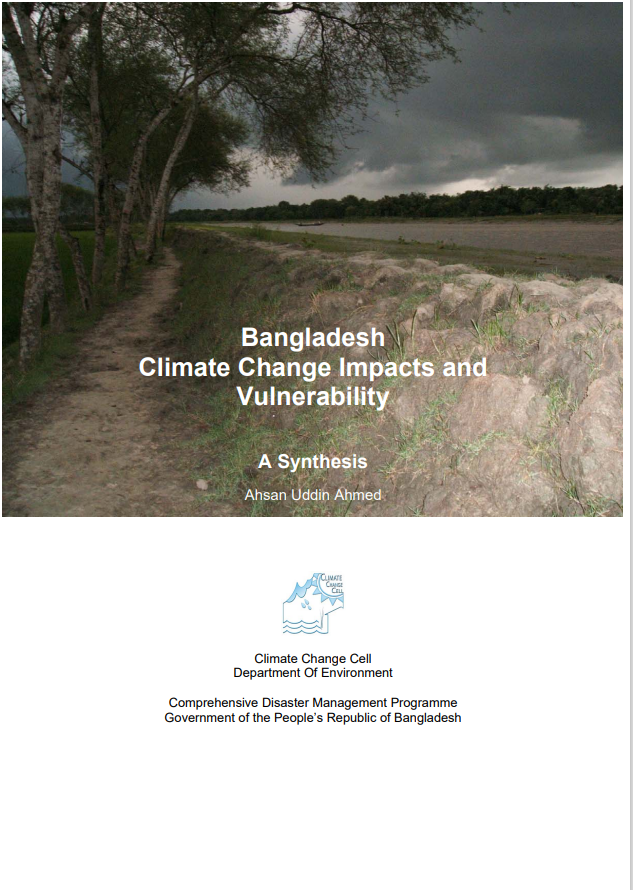🌿 COP 30 - Building a Greener Tomorrow
The 30th UN Climate Change Conference (COP 30) is taking place in Belém, Brazil. Stay informed about global climate actions, negotiations, and live sessions from 10 – 21 November 2025.
Get Updates
Bangladesh Climate Change Impacts and Vulnerability

Files
Date
July, 2006Author(s)
- Ahsan Uddin Ahmed
Abstract
According to the Third Assessment Report of IPCC, South Asia is the most vulnerable region of the world to climate change impacts (McCarthy et al., 2001). The international community also recognizes that Bangladesh ranks high in the list of most vulnerable countries on earth. Bangladesh’s high vulnerability to climate change is due to a number of hydro-geological and socio-economic factors that include: (a) its geographical location in South Asia; (b) its flat deltaic topography with very low elevation; (c) its extreme climate variability that is governed by monsoon and which results in acute water distribution over space and time; (d) its high population density and poverty incidence; and (e) its majority of population being dependent on crop agriculture which is highly influenced by climate variability and change. Despite the recent strides towards achieving sustainable development, Bangladesh’s potential to sustain its development is faced with significant challenges posed by climate change (Ahmed and Haque, 2002). It is therefore of utmost importance to understand its vulnerability in terms of population and sectors at risk and its potential for adaptation to climate change. To streamline activities of the Government of Bangladesh towards facilitating adaptation to climate change, the Climate Change Cell (CCC) has been established under the aegis of the Ministry of Environment and Forest – one of the focal points on climate change issues. Housed at the Department of Environment, the ‘Cell’ has initiated its activities with support from the Comprehensive Disaster Management Programme (CDMP), the DfID and the United Nations Development Programme (UNDP). With this document, the CCC made an effort to pull together the available knowledge on climate change impacts and vulnerability in Bangladesh, which is expected to help readers to understand the dynamics of the important concern. The task in hand was to review and synthesize the current knowledge base. An assignment was commissioned based on which the author designed a study to synthesize all the relevant findings available in the currently available literature so it helps in understanding the dynamics of climate change and define courses of action by various actors involved in the national development processes. The specific objective of the study was to prepare a synthesis for the general readership on climate change issues for Bangladesh. The modality of achieving this objective is to take note of all the important findings in published literature and put it in a form so that the product helps the readership to clearly understand the dynamics of climate change and relate it within the contexts of various relevant sectoral development. It is expected that the publication will help create awareness among the stakeholders and in near future, lead to an ‘informed decision making’ while considering development decisions in vulnerable areas and/or sectors. The synthesis is, therefore, envisaged as a tool to mainstream adaptation to climate change in Bangladesh, in order to achieve the goals and targets of Bangladesh’s Initial National Communication1 (MOEF, 2002) and the National Adaptation Programme of Action (NAPA ) process.
Citation
Ahsan Uddin Ahmed
Publisher
Climate Change Cell, Department of Environment, Comprehensive Disaster Management Programme, Government of the People’s Republic of Bangladesh
Rights Holder
Climate Change Cell, Department of Environment, Comprehensive Disaster Management Programme, Government of the People’s Republic of Bangladesh
URI
https://knowledgehub.pksf.org.bd/collections/M2pWSFRJUTdUanRONXBUU1BNalpnQT09
